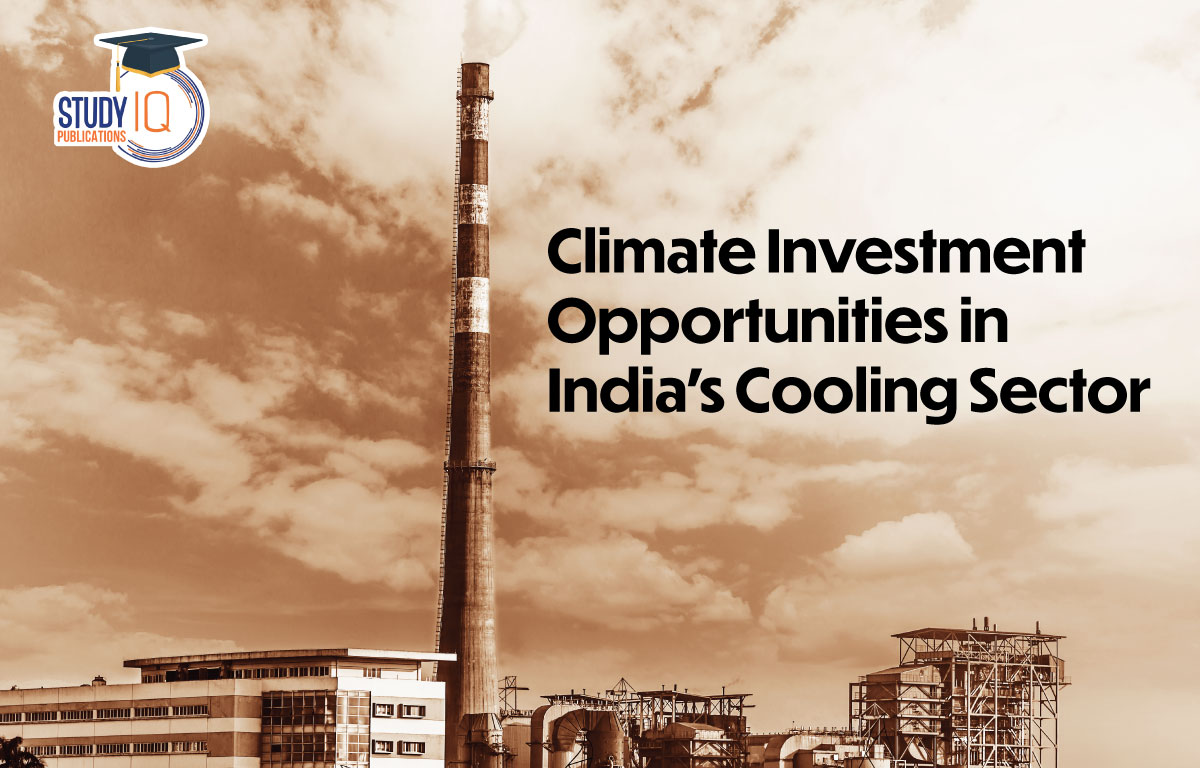Table of Contents
Highlights of the Report
- India’s Vulnerabilities:
- More than 160 to 200 million people could be exposed to a lethal heat wave in India every year.
- Around 34 million Indians will face job losses due to heat stress-related productivity decline.
- Food loss due to heat during transportation is likely to soar beyond the current $13 billion annually.
Heat Waves
- A Heat Wave is a period of abnormally high temperatures, more than the normal maximum temperature. Heatwave is considered if the maximum temperature of a station reaches at least 40°C or more for Plains and at least 30°C or more for Hilly regions.
- Based on Departure from Normal Heat Wave: Departure from normal is 4.50°C to 6.40°C; Severe Heat Wave: Departure from normal is >6.40degree C
- Based on Actual Maximum Temperature Heat Wave: When actual maximum temperature ≥ 45°C; Severe Heat Wave: When actual maximum temperature ≥47
Major Opportunities for India
- By 2037, the demand for cooling is likely to be eight times more than current levels.
- The need to deploy alternative and innovative energy-efficient technologies for keeping spaces cool could open an investment opportunity of $1.6 trillion by 2040.
- Besides reducing greenhouse gas emissions significantly, it will also create 3.7 million jobs.
- With the demand for cooling shooting up, there will be a demand for a new air-conditioner every 15 seconds.
- These cooling requirements could lead to an expected rise of 435% in annual greenhouse gas emissions over the next two decades.
- The report proposes a roadmap to support New Delhi’s India Cooling Action Plan (ICAP) 2019, through new investments in three major sectors: building construction, cold chains and refrigerants.
- Adopting climate-responsive cooling techniques as a norm in both private and government-funded constructions.
- This will ensure that those at the bottom of the economic ladder are not disproportionately affected by rising temperatures.
- India’s Pradhan Mantri Awas Yojana (PMAY)-an affordable housing program for the poor, can adopt such changes on scale.
- Enacting a policy for district cooling could lead to the consumption of 20-30% less power than the most efficient conventional cooling solutions.
- District cooling technologies generate chilled water in a central plant which is then distributed to multiple buildings via underground insulated pipes. This brings down the cost for providing cooling to individual buildings.
- Implementation of local and city-wide urban cooling measures such as cool roofs should also be considered.
- Fixing gaps in cold chain distribution networks by investing in pre-cooling and refrigerated transport systems.
- This will minimize rising food and pharmaceutical wastage during transport due to higher temperatures.
- It can help decrease food loss by about 76% and reduce carbon emissions by 16%.
- Improvement in servicing, maintenance and disposal of equipment that uses hydrochlorofluorocarbons alongside a shift to alternative options with a lower global warming footprint.
- This can create two million jobs for trained technicians over the next two decades and reduce the demand for refrigerants by around 31%.
- Effective implementation of the Sendai Framework for Disaster Risk Reduction 2015-30 with the state playing a leading role is also suggested in the report.
India Cooling Action Plan (ICAP)
- ICAP was launched in 2019 by the Ministry of Environment, Forests and Climate Change.
- It provides a 20-year perspective and outlines actions needed to provide access to sustainable cooling.
- The Plan seeks to:
- reduce cooling demand across sectors by 20% to 25% by 2037-38,
- reduce refrigerant demand by 25% to 30% by 2037-38,
- Reduce cooling energy requirements by 25% to 40% by 2037-38,
- recognise “cooling and related areas” as a thrust area of research under the national Science and Technology Programme,
- training and certification of 100,000 servicing sector technicians by 2022-23, synergizing with Skill India Mission.


 Securities Markets Code Bill 2025: Towar...
Securities Markets Code Bill 2025: Towar...
 Weakly Interacting Massive Particles (WI...
Weakly Interacting Massive Particles (WI...
 India–Oman Trade Deal: CEPA Signed to ...
India–Oman Trade Deal: CEPA Signed to ...

























